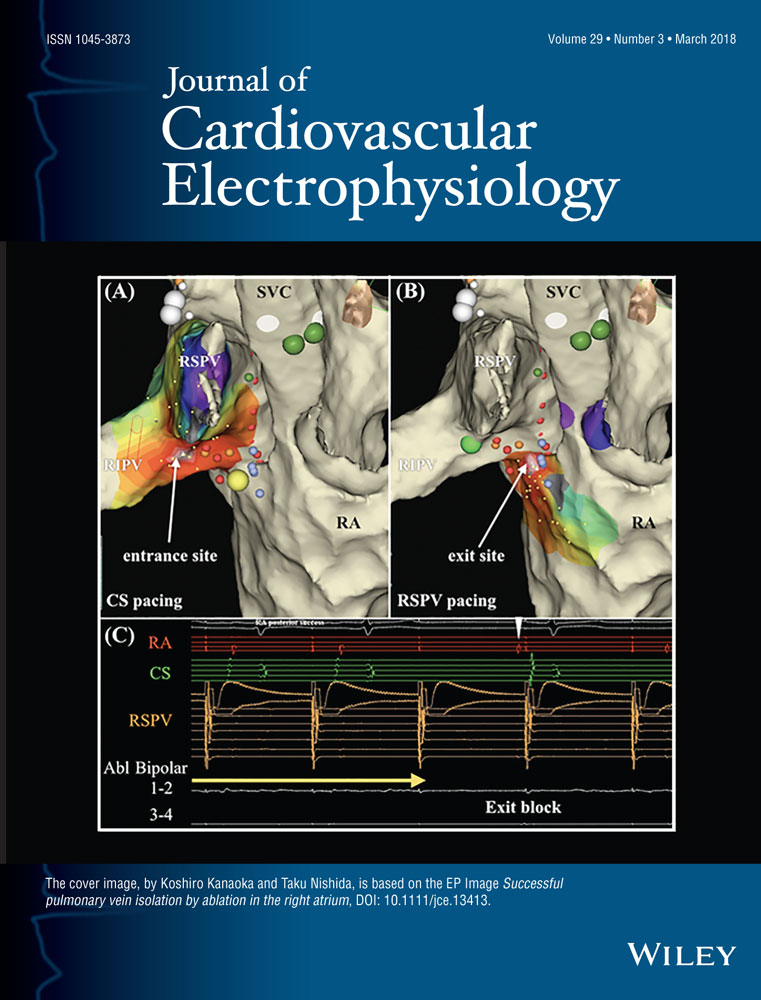Isthmus sites identified by Ripple Mapping are usually anatomically stable: A novel method to guide atrial substrate ablation?
Funding Information:
VL is funded by a British Heart Foundation Clinical Research Training Fellowship award (FS/15/12/31239). NL is funded by a British Heart Foundation Intermediate Clinical Research Fellowship award (FS/15/25/31423).
Disclosures: Imperial Innovations holds Intellectual Property relating to Ripple Mapping on behalf of PK and NL, who have also received royalties from Biosense-Webster. PK, NL, and VL have received consulting fees with respect to Ripple Mapping from Biosense-Webster. Other authors: No disclosures.
Abstract
Background
Postablation reentrant ATs depend upon conducting isthmuses bordered by scar. Bipolar voltage maps highlight scar as sites of low voltage, but the voltage amplitude of an electrogram depends upon the myocardial activation sequence. Furthermore, a voltage threshold that defines atrial scar is unknown. We used Ripple Mapping (RM) to test whether these isthmuses were anatomically fixed between different activation vectors and atrial rates.
Methods
We studied post-AF ablation ATs where >1 rhythm was mapped. Multipolar catheters were used with CARTO Confidense for high-density mapping. RM visualized the pattern of activation, and the voltage threshold below which no activation was seen. Isthmuses were characterized at this threshold between maps for each patient.
Results
Ten patients were studied (Map 1 was AT1; Map 2: sinus 1/10, LA paced 2/10, AT2 with reverse CS activation 3/10; AT2 CL difference 50 ± 30 ms). Point density was similar between maps (Map 1: 2,589 ± 1,330; Map 2: 2,214 ± 1,384; P = 0.31). RM activation threshold was 0.16 ± 0.08 mV. Thirty-one isthmuses were identified in Map 1 (median 3 per map; width 27 ± 15 mm; 7 anterior; 6 roof; 8 mitral; 9 septal; 1 posterior). Importantly, 7 of 31 (23%) isthmuses were unexpectedly identified within regions without prior ablation. AT1 was treated following ablation of 11/31 (35%) isthmuses. Of the remaining 20 isthmuses, 14 of 16 isthmuses (88%) were consistent between the two maps (four were inadequately mapped). Wavefront collision caused variation in low voltage distribution in 2 of 16 (12%).
Conclusions
The distribution of isthmuses and nonconducting tissue within the ablated left atrium, as defined by RM, appear concordant between rhythms. This could guide a substrate ablative approach.




